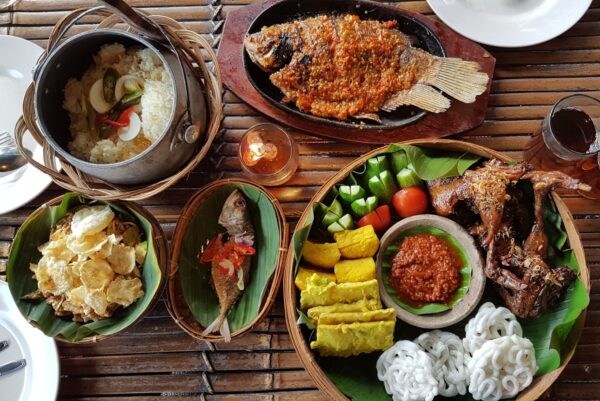Lampiões, a culinary treasure from Brazil’s vibrant Northeastern region, has seamlessly integrated itself into the rich fabric of Brazilian cuisine. This savory delight is not only a local favorite but also captivates the hearts and taste buds of both locals and adventurous travelers.
The Rich History Behind Lampiões
Early Beginnings in the 19th Century
Lampiões originated in the early 19th century when Portuguese colonizers introduced pork to Brazil, but it wasn’t until the late 19th century that it became a beloved street food in Northeastern Brazil, sparking debates over its name’s origins, ranging from infamous bandit leaders to traditional oil lamps used by vendors.
Crafting a Culinary Delight
A Symphony of Flavors
At the core of Lampiões is succulent pork, typically pig’s head or feet, combined with cassava flour, onions, tomatoes, garlic, cilantro, and a hint of chili pepper for spice. This slow-cooked dish over open flames transforms these ingredients into a culinary masterpiece, embodying the essence of Brazilian culinary artistry.
Lampiões: More Than Just Food
Historical Echoes: Lampiões and the Cangaço Movement
The Rise of Cangaço: A Socio-Historical Context
The story of Lampiões intertwines with the cangaço movement, a reaction to the harsh socio-economic conditions in Northeastern Brazil during the 19th century. Severe droughts and widespread poverty gave rise to these groups, with Lampião emerging as a notable leader. His strategic acumen and fierce reputation established him as a defender of the oppressed against the powerful.
The Symbolic Lampiões Tree
Unveiling the Mysteries of the Lampiões Tree
Lampiões, also known as Syzygium jambos or rose apples, are more than just food; they hold symbolism and medicinal value across cultures, revered in Indian mythology for their fever-reducing leaves and anti-inflammatory bark.
Lampiões Across Cultures
A Symbolic Journey
Originating in China as practical light sources, lampiões evolved into symbols of prosperity and unity. During Chinese New Year, these vibrant lanterns usher in good fortune. In Japan, they honor ancestors during the Obon festival, and in Thailand and India, they play significant roles in religious ceremonies, weddings, and celebrations.
Legends and Folklore Surrounding Lampiões
Mythical Tales and Heroes
Lampiões is intertwined with Greek and Norse mythologies, and in Brazilian folklore, the legendary bandit Lampião is known for daring lamp thefts, creating a narrative passed down through generations.
Lampiões in the Modern World
The Enduring Relevance of Lampiões
In the modern era, lampiões, now known as oil or kerosene lamps, continue to be relevant. They serve as emergency lighting during power outages, illuminate outdoor adventures, and add antique charm to various spaces, standing as a testament to their lasting significance.
Embracing the Legacy of Lampiões in the 21st Century
A Living Heritage
Lampiões are more than just a dish or a lamp; they represent a cultural legacy. Inspiring creativity across various art forms and carrying socio-political undertones, Lampiões remains a vibrant symbol, illuminating the corridors of Brazilian history and beyond.
Conclusion
Lampiões, with its deep roots in Brazilian culture and folklore, continues to shine brightly, fostering connections across generations and inspiring creativity within the ever-evolving tapestry of human experience.
